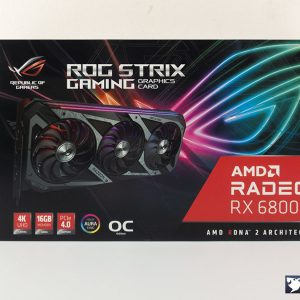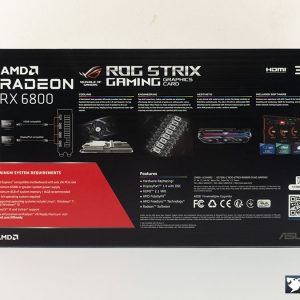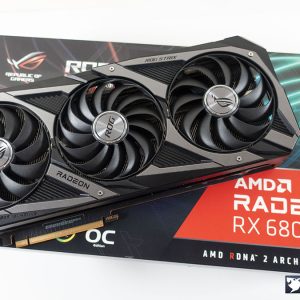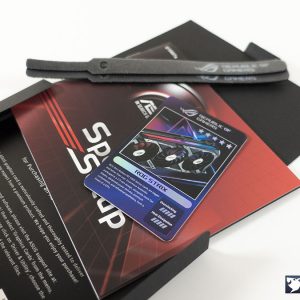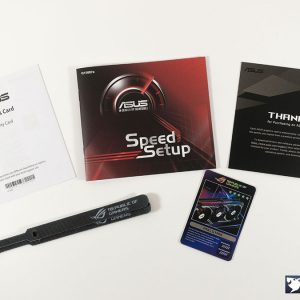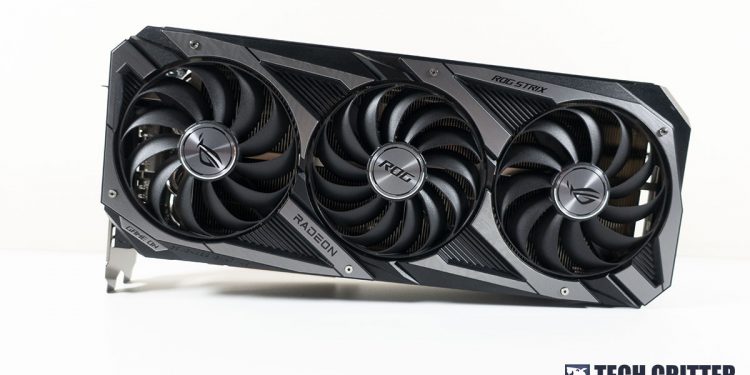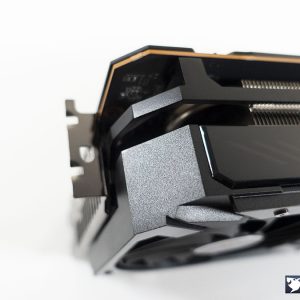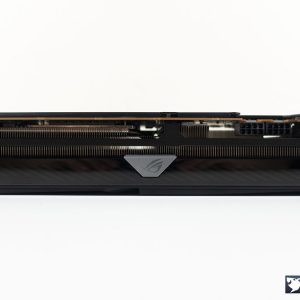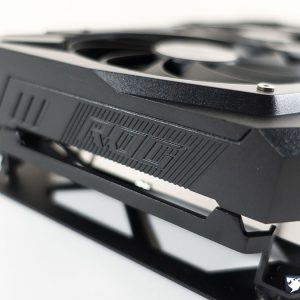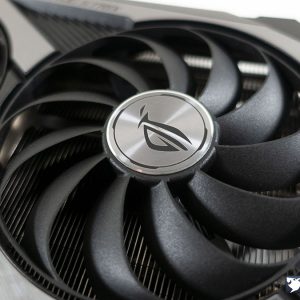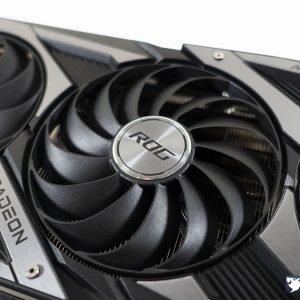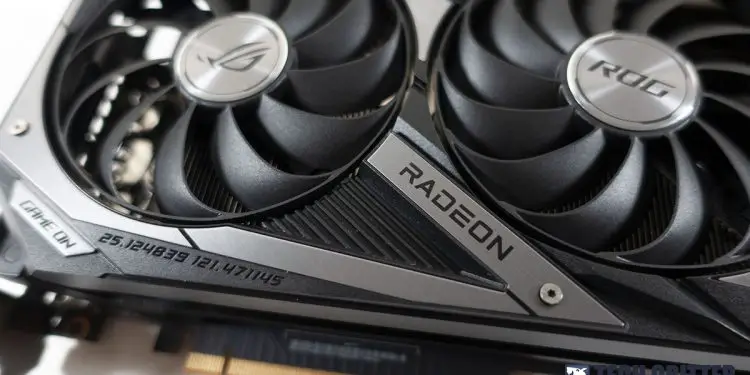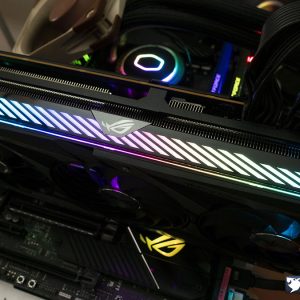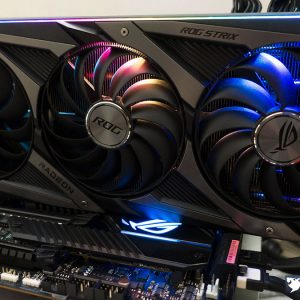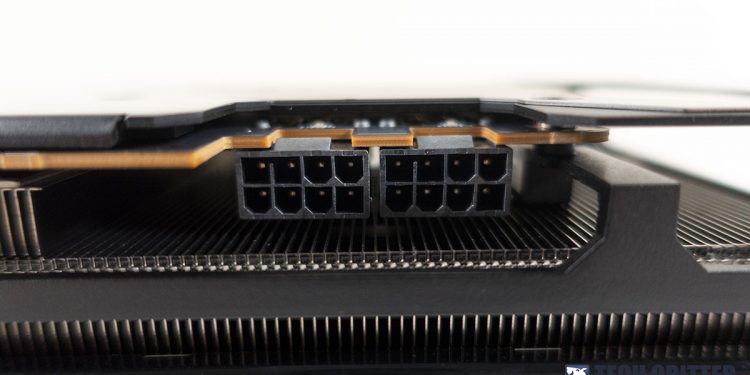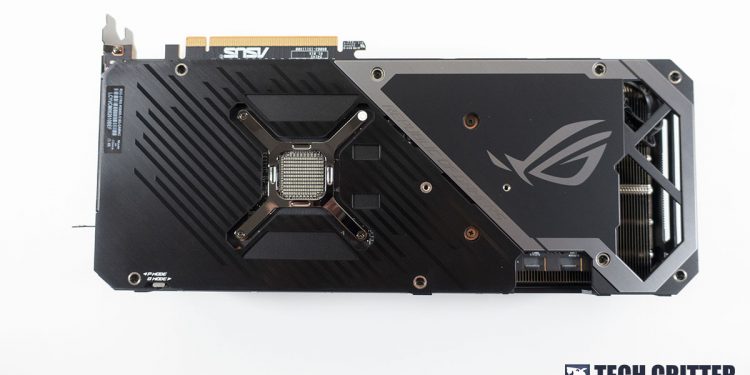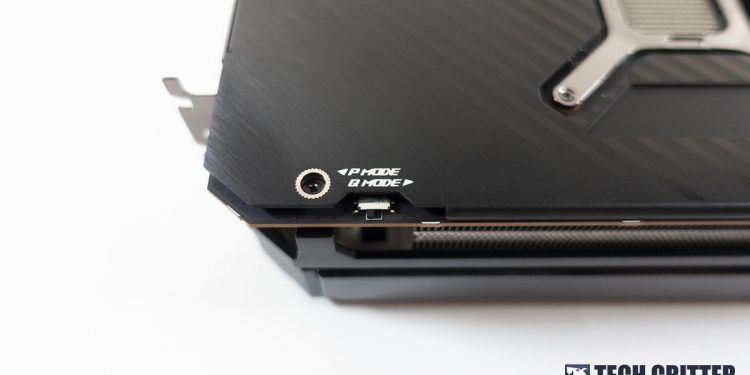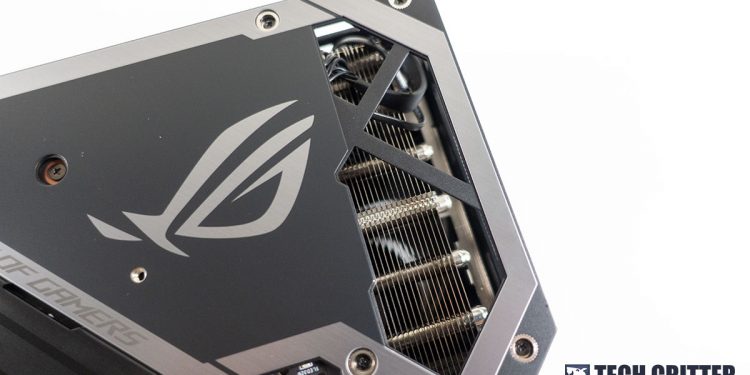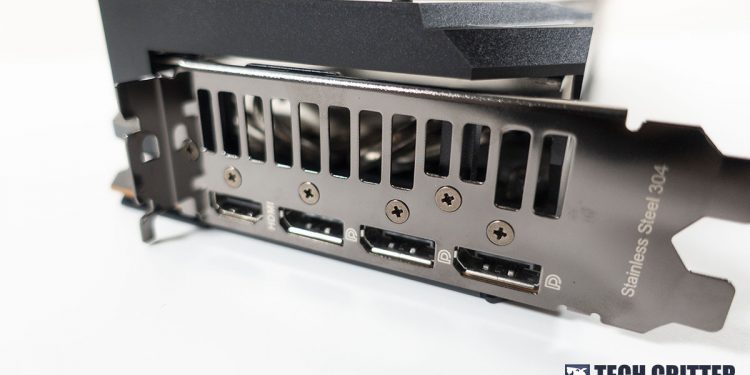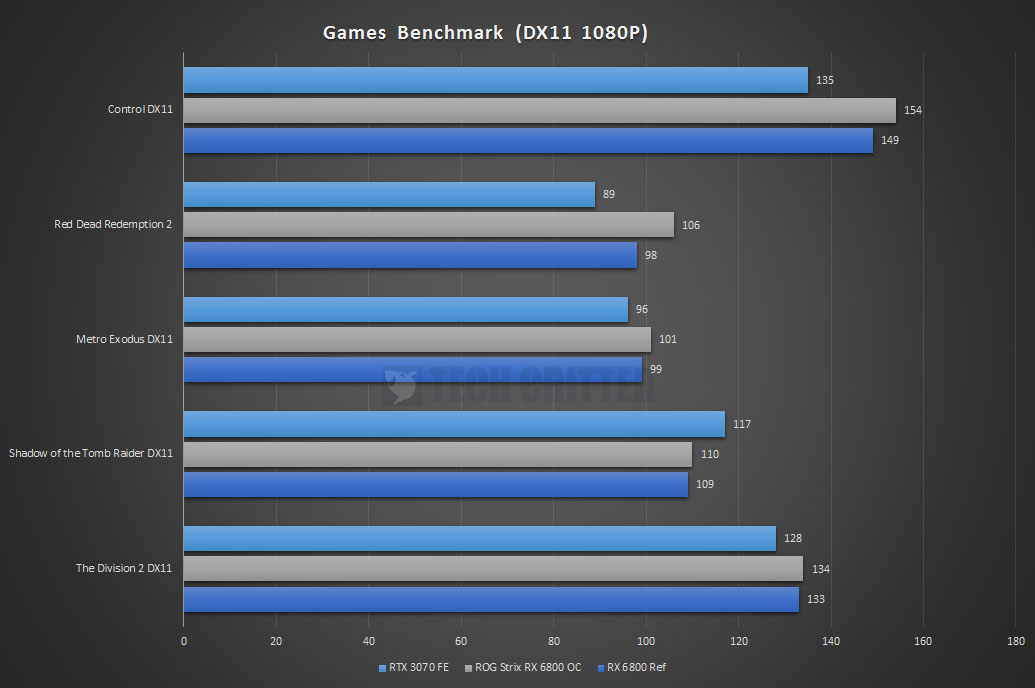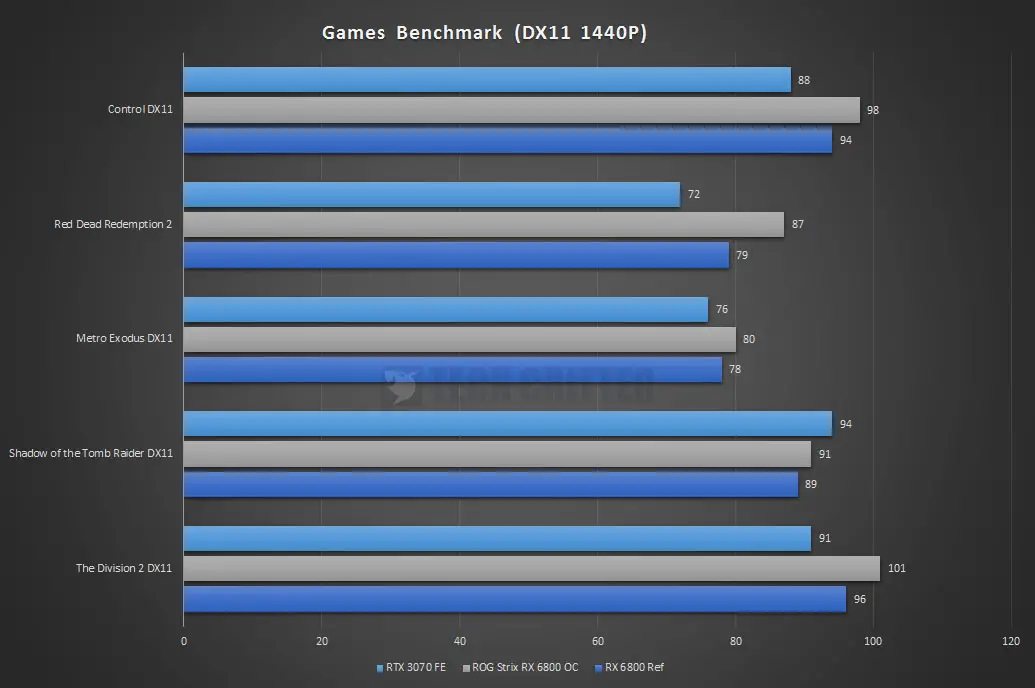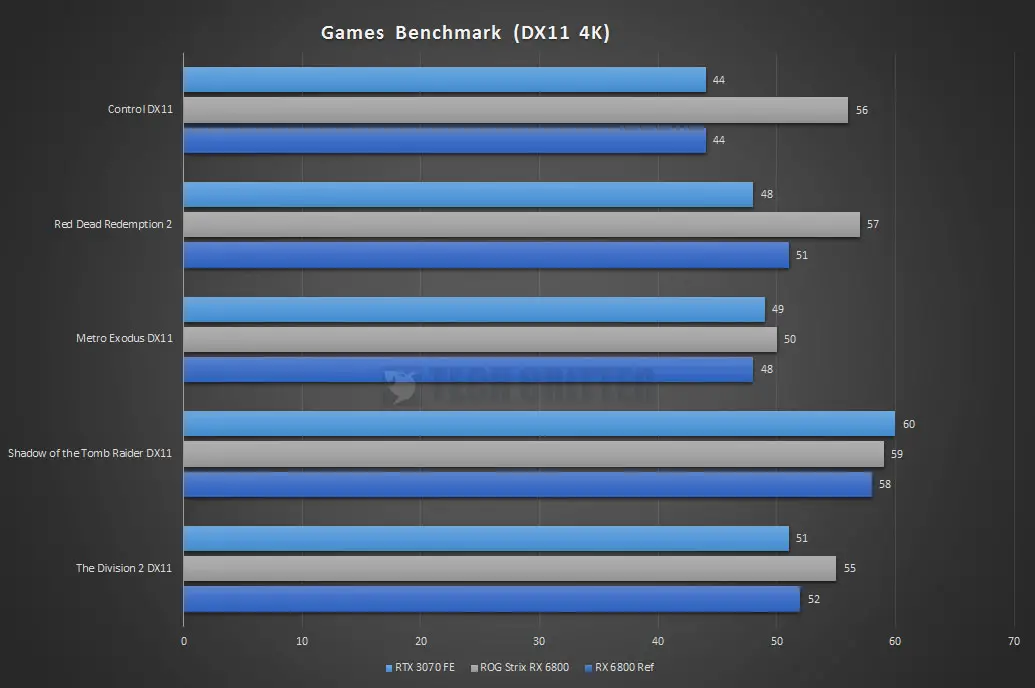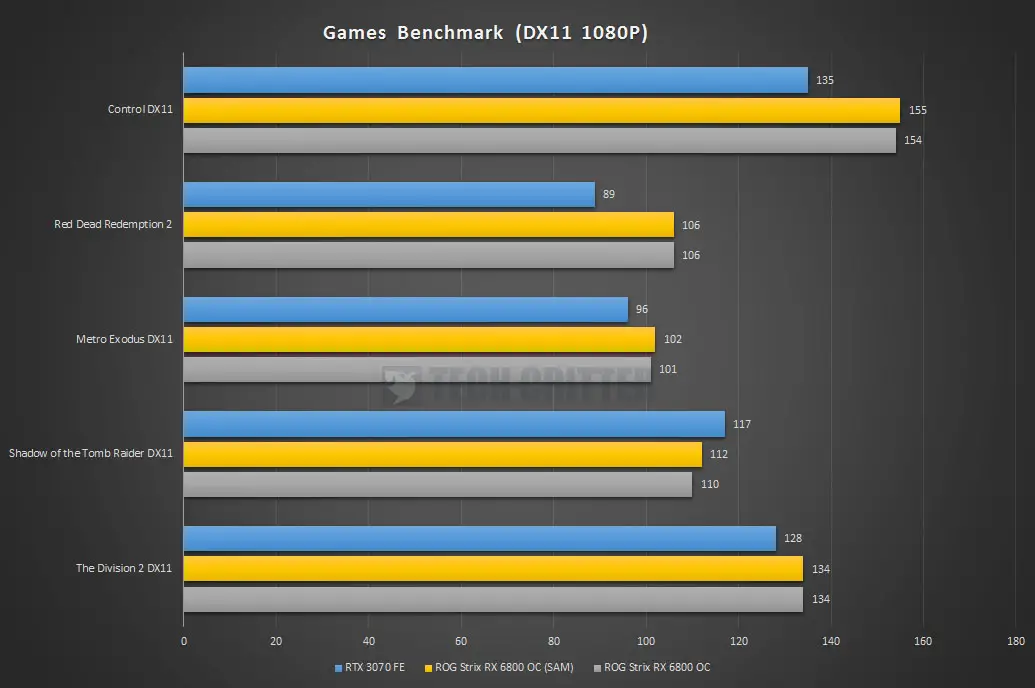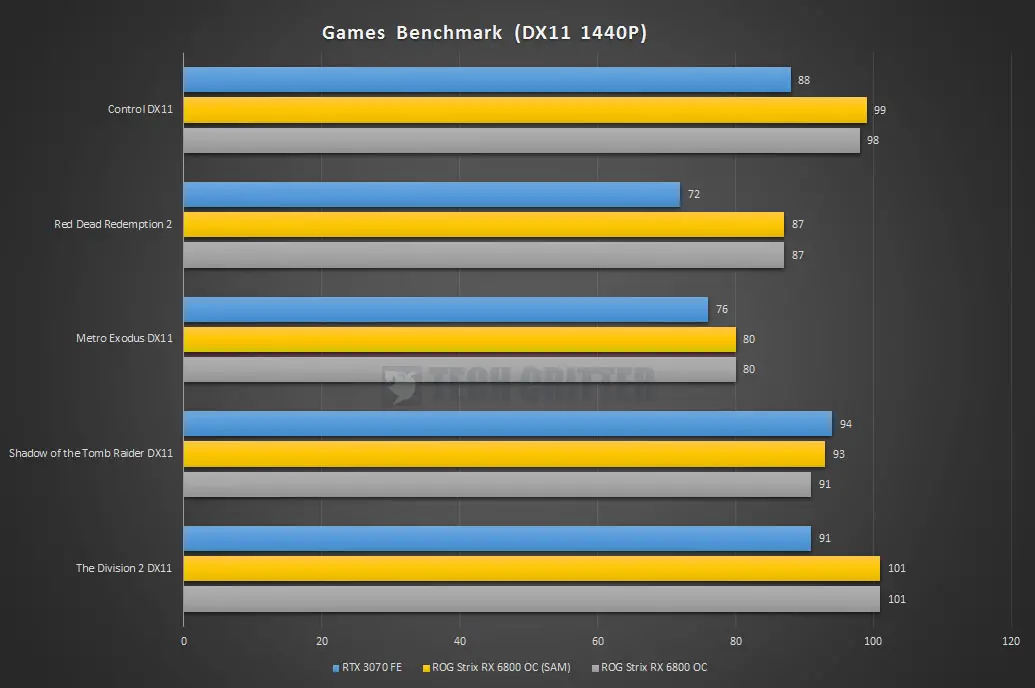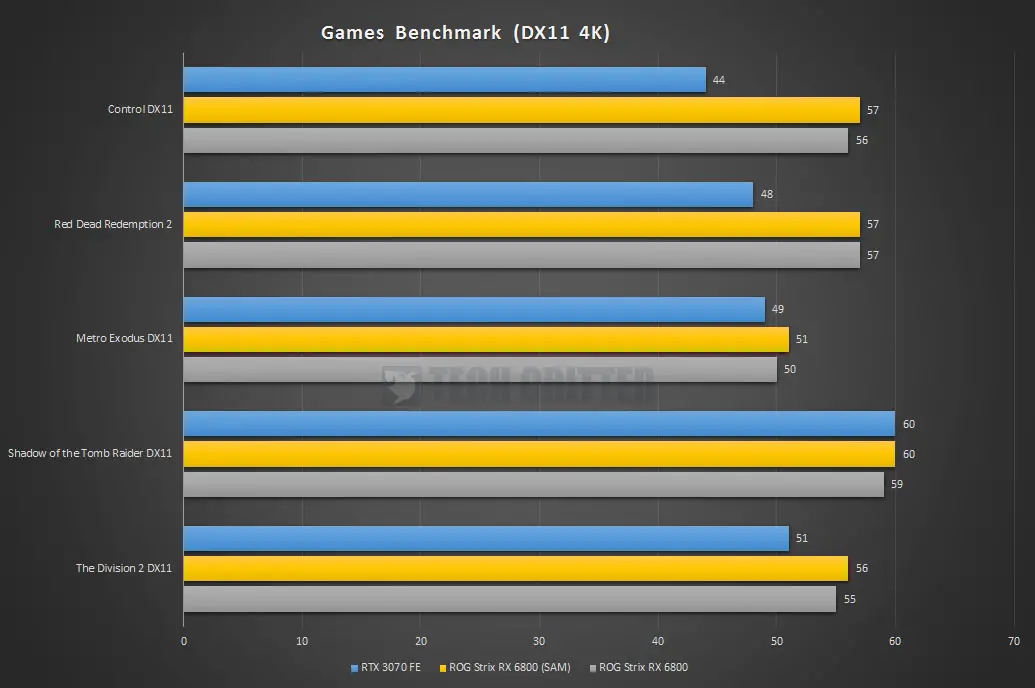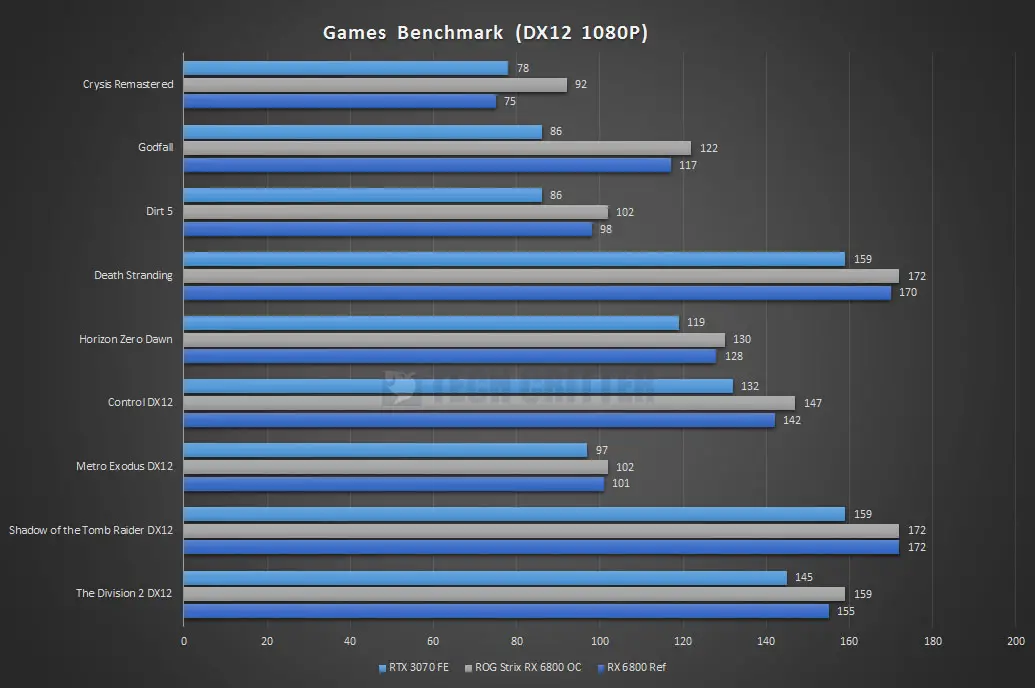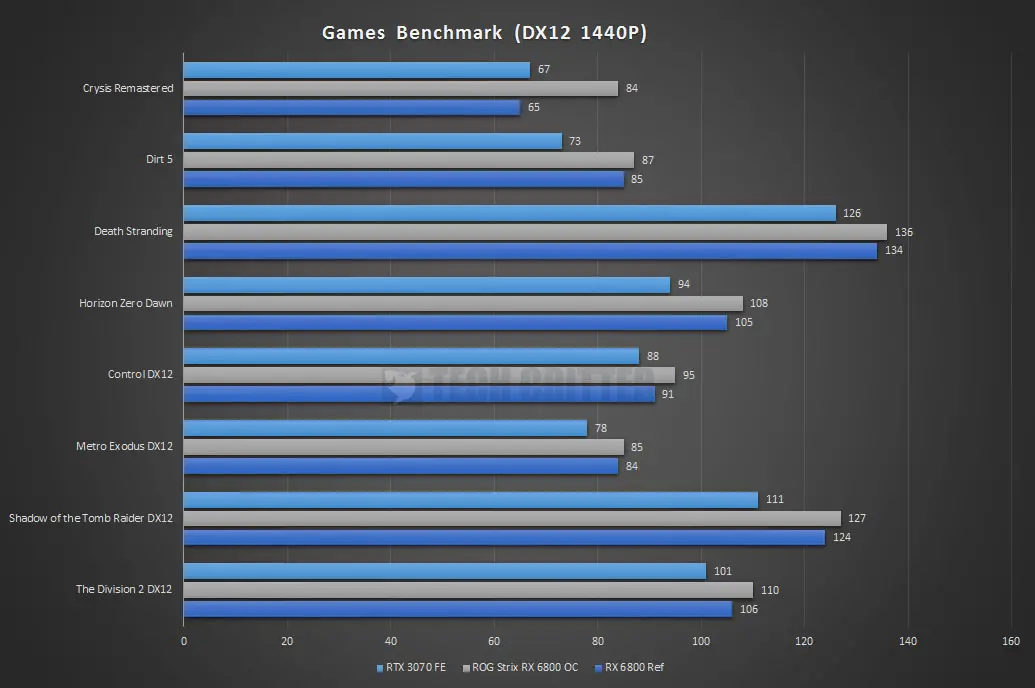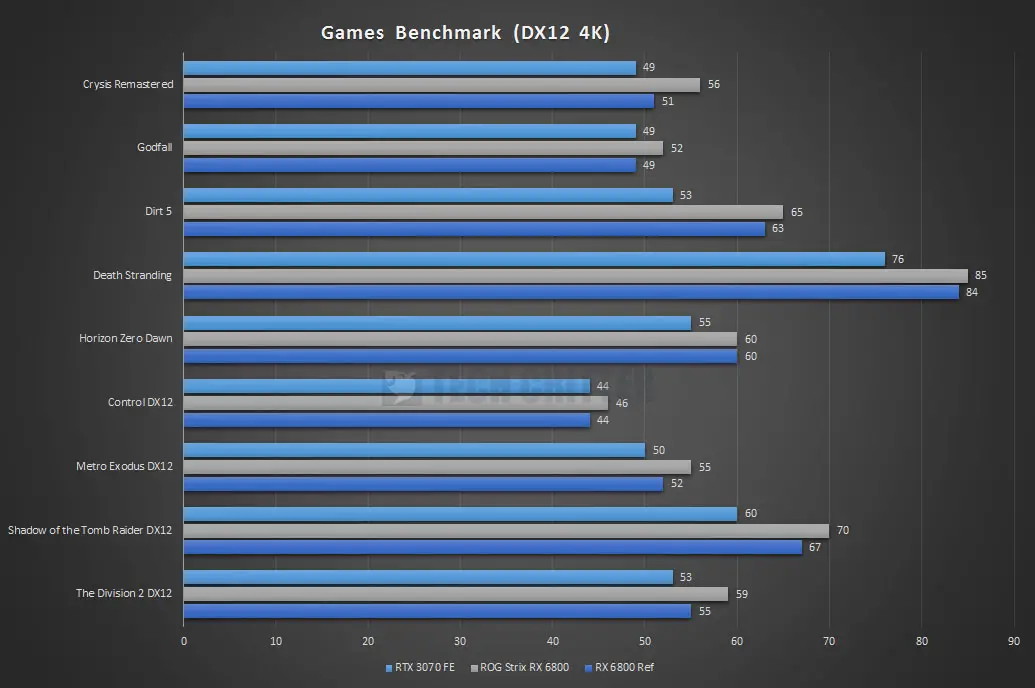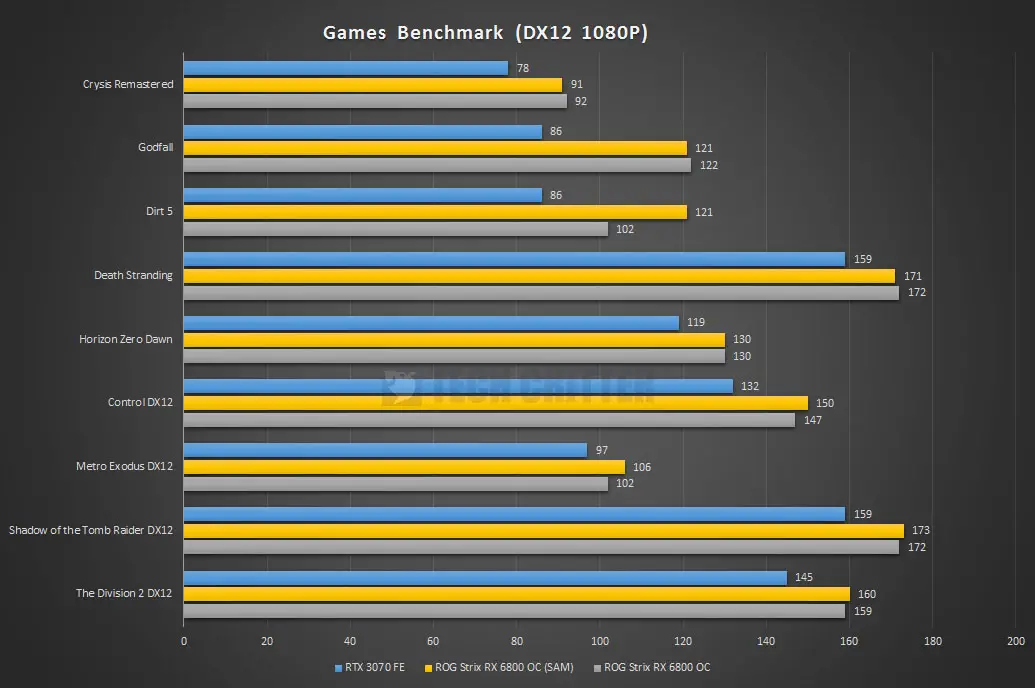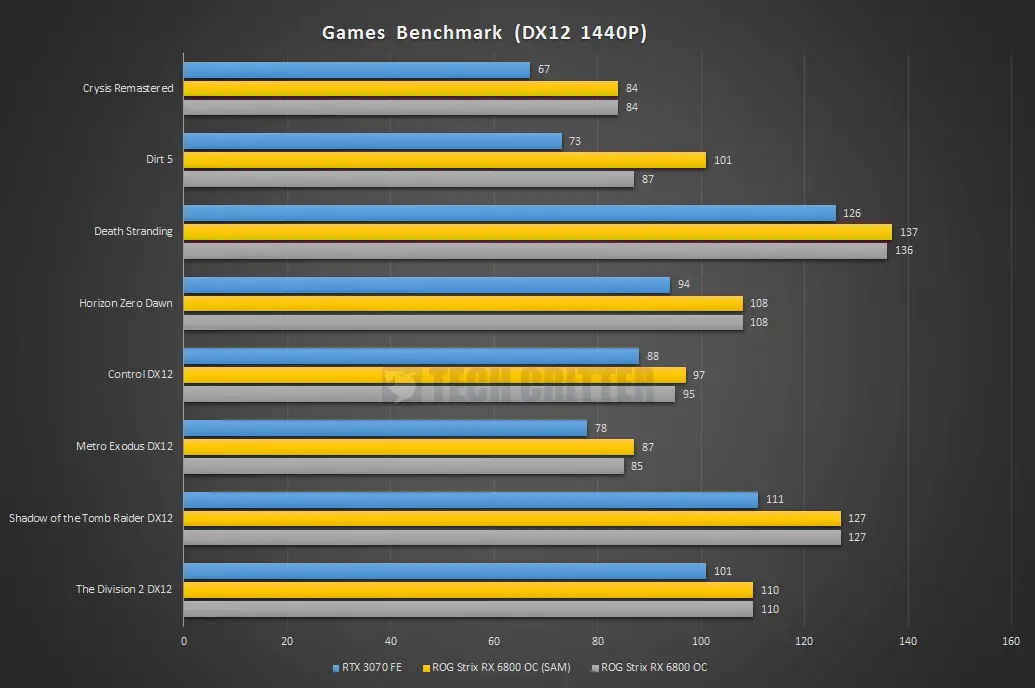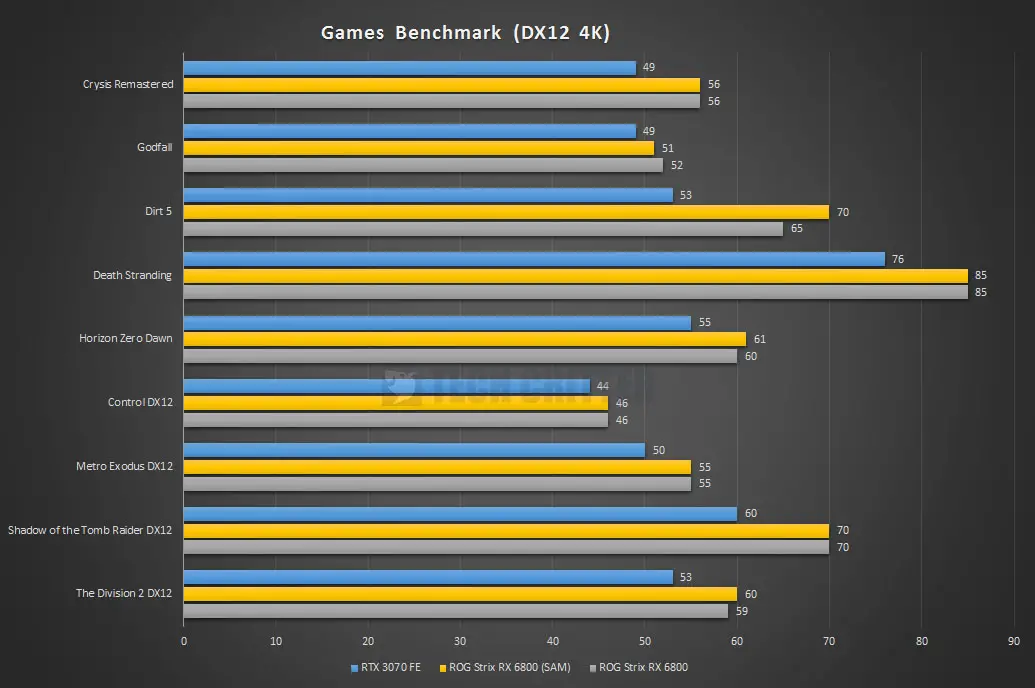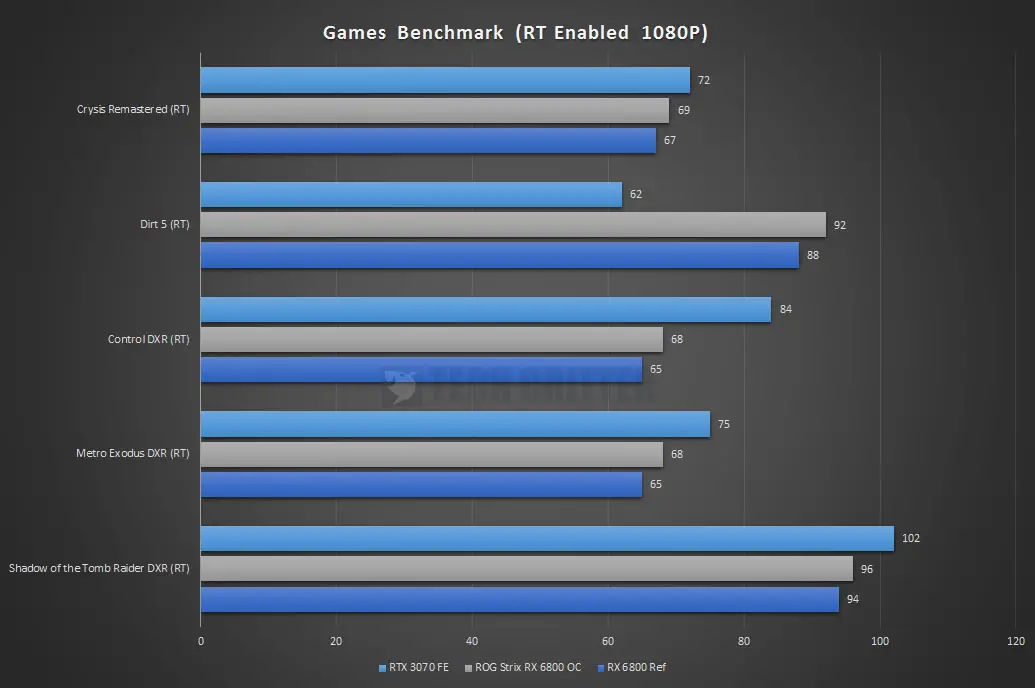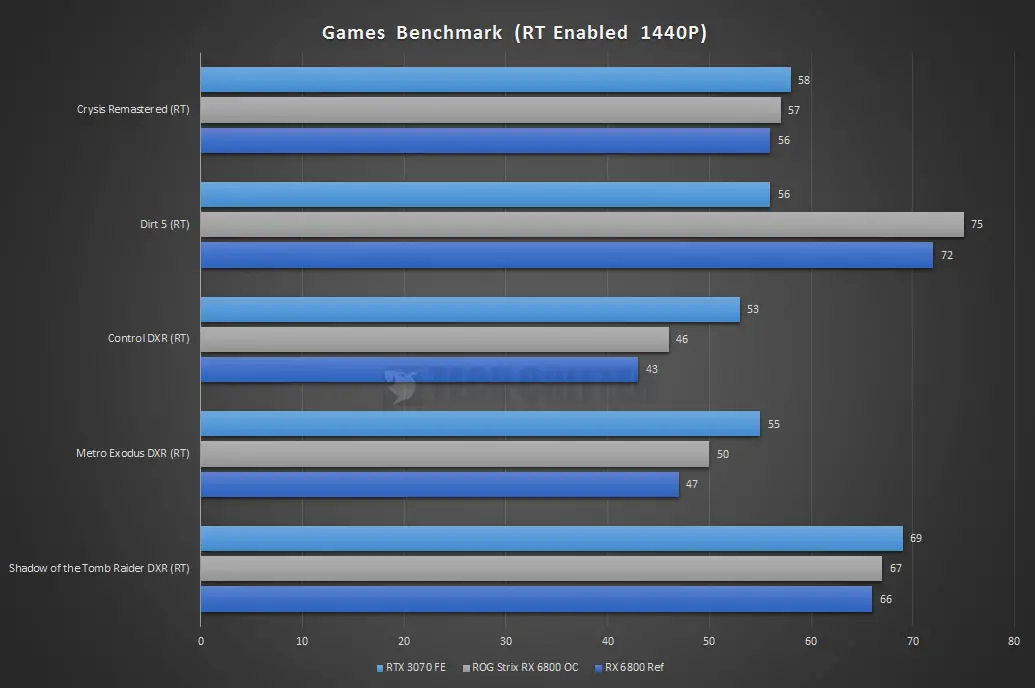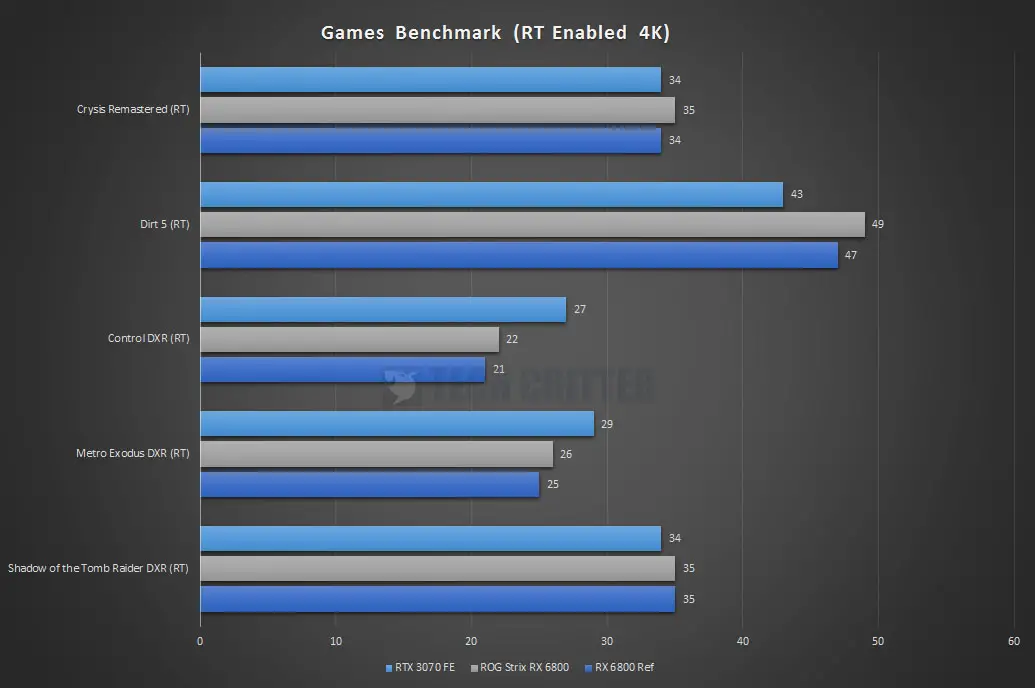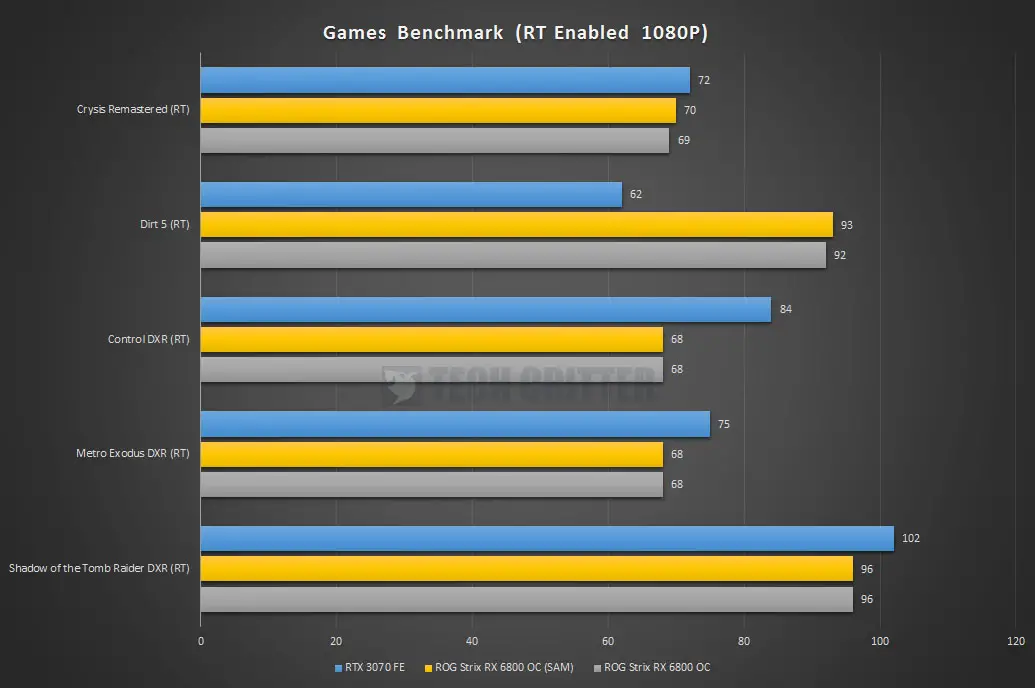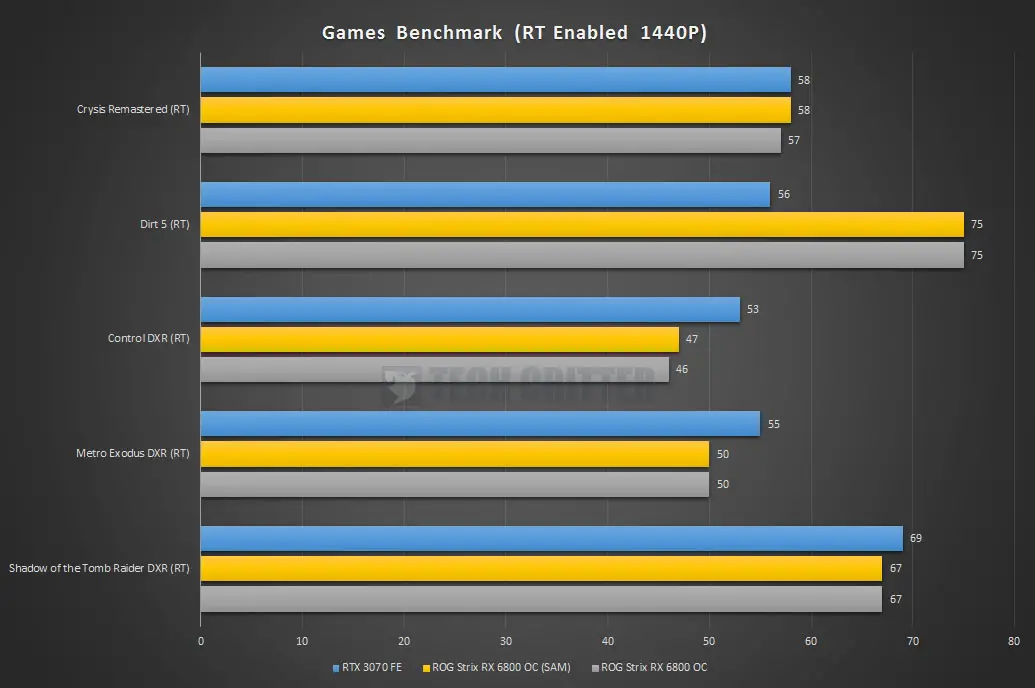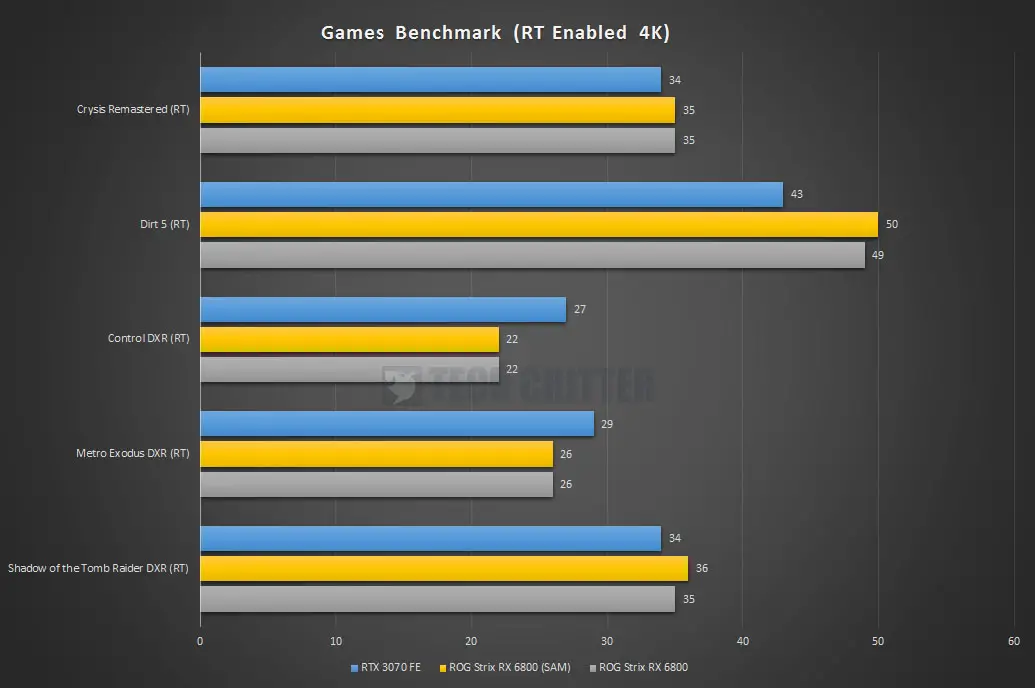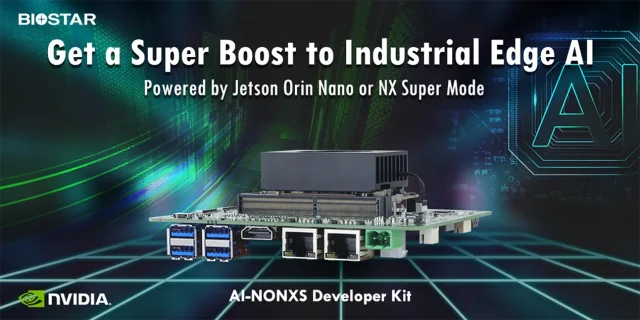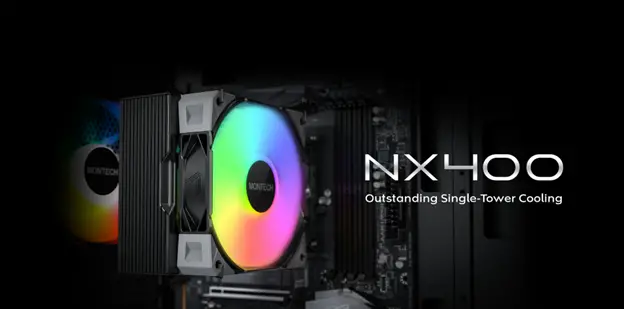It’s been a while since AMD launched its Radeon RX 6000 series graphics cards and with the custom design from the board partners finally arrive on the market, I think it’s about time we take a look at what the other board partners have to offer to the end-users. The first to arrive at our office this time is the ASUS ROG Strix Radeon RX 6800 OC Edition and we’ve done a number of tests to see how does it fare against the reference design Radeon RX 6800.
Specifications
| GPU | Radeon RX 6800 | ROG Strix Radeon RX 6800 OC Edition |
| Shading Units | 3840 | 3840 |
| TMUs | 240 | 240 |
| ROPs | 96 | 96 |
| Compute Units | 60 | 60 |
| Boost Clock | 2105 MHz | 2190 MHz |
| Memory Type | GDDR6 | GDDR6 |
| Memory Size | 16GB | 16GB |
| Memory Bus | 256-Bit | 256-Bit |
| Bandwidth | 512 GB/s | 512 GB/s |
| Effective Memory Speed | 16 Gbps | 16 Gbps |
| Bus Interface | PCIe 4.0 x 16 | PCIe 4.0 x 16 |
| Additional Power Connector | 2 x 8-pin | 2 x 8-pin |
| TDP | 250W | 250W |
| Recommended PSU | 650W | 650W |
Unboxing
For the packaging, we can see a pretty consistent design for the ROG Strix series cards, both GeForce and Radeon. As most of the information such as the features and minimum system requirement of the product is printed at the back of the box, the only useful information you’ll find at the front of the box is the model is probably the ‘OC Edition’ label that differentiates it from the non-OC model.
The content of the box is pretty straight forward I’d say. Other than the card itself, you’ll also find the usual user’s manual and some accessories that comes together with the card. While we have no idea what can we do with the trading card other than just being a collectible for the bragging rights, the velcro straps are what I really appreciate because of the practical use – to keep your PCIe power cables tidy.
The ROG Strix Radeon RX 6800 OC Edition
At first glance, we can see that the ROG Strix RX 6800 is equipped with the same or if not, a similar cooler as what you can find on the newer ROG Strix cards. Depending on how you look at it, it might require some time for one to appreciate its unusual-looking design.
As it’s equipped with a gigantic and beefy heatsink to cool the GPU better, the card itself measures 320mm in length and will take up 3 slots on the expansion slots of your system. It’s not really a big deal if you’re already using a rather big mid-tower or full tower chassis for your system, but knowing that some crazy compact ITX chassis will only come with an expansion slot clearance that is made for a 2-slot card, small form factor builds enthusiasts might encounter clearance issues with this card if they’re indeed using an ITX chassis with such specifications.
For a card at this size, sagging is definitely something to be expected. ASUS does have their own solution for this of course, which is the metal frame located in between the cooler shroud and the PCB to minimize the sagging on the PCB if you’re not using any form of support for the card i.e graphics card holder stand or bracket.
Gigantic heatsink aside, the ROG Strix RX 6800 is also equipped with triple Axial-tech fans that are similar to what we saw on the newer TUF Gaming graphics cards but with more fan blades on each fan. The middle fan will spin in an alternate direction to reduce air turbulence and provide better coverage on the heatsink for better cooling performance.
I’ve also noticed some interesting details on the cooler while taking a close inspection. The first is the pair of numbers that appears to be the coordinate of ASUS Headquarters located in Taiwan. The intention of having this on the card is unclear but I’m guessing that it’s some fun facts for the ROG fans to find out themselves. Another interesting detail is the RADEON lag on the shroud, which is not present on the ROG Strix GeForce RTX 3080 and I believe is meant to differentiate both the GeForce and Radeon design.
Not really sure how to react to this but I believe the design team at ASUS probably has some interesting idea in mind while designing this card.
The RGB element on the ROG Strix RX 6800 comes in the form of an RBG light bar located at the side of the card, which I find somewhat acceptable this time even though I’m still not a fan of all these RGB lightings. It’s not crazy bright and can be disabled using the ASUS Aura software if you don’t need the extra bling.
The ROG Strix RX 6800 comes with a rated TDP of 250W and will require two 8-pin PCIe power connectors to run, similar to what you’ll find on the reference Radeon RX 6800. A 650W rated power supply is recommended if you want to have this card in your system.
Moving on to the back of the card, I can say this is probably the best looking backplate for ROG so far. The design is surprisingly clean and there are no traces of unnecessary RGB lightings just for the sake of overdoing what’s not practical (the RGB bling). The design is very similar to the new ROG Strix cards for the RTX 30 series lineup but it’s still distinctive enough for one to able to tell the difference between the design for the ROG Strix Radeon and GeForce cards.
ASUS has decided to include a DIP switch on the ROG Strix RX 6800 OC, allowing users to toggle between P mode (Performance by default) and Q mode (Quiet). Quiet mode is not something I wouldn’t really recommend unless you have higher priorities on the acoustic performance for your system. Users who want the best performance out of the card can just leave it as it is in the default performance mode.
As mentioned earlier, there’s also a cutout at the end of the card which I believe is done intentionally to give a similar cooling performance as what we’ve seen on the ROG Strix RTX 30 series cards.
While the ROG Strix RX 6800 doesn’t come with any USB Type-C port like the reference RX 6800 did but you’ll still get the standard with 1 x HDMI 2.1 port, and 3 x DisplayPort 1.4 for the display output options.
Test System Setup
The test is done using the following setup under an ambient temperature of 30°C:
| CPU | Ryzen 9 5950X |
| Motherboard | ASUS ROG Crosshair VIII Dark Hero |
| Memory | TEAMGROUP T-Force Xtreem ARGB DDR4 @DDR4-3600 CL14 |
| Graphics Card | AMD Radeon RX 6800 / ASUS ROG Strix Radeon RX 6800 OC Edition |
| Power Supply | Cooler Master V1200 Platinum |
| Primary Storage | Corsair Force Series Gen.4 PCIe MP600 2TB |
| Secondary Storage | WD Black 6TB |
| CPU Cooler | Cooler Master MasterLiquid ML360R RGB |
| Chassis | Streacom BC1 Open Benchtable |
| Operating System | Windows 10 64bit |
We’ve done a series of tests with games that support both DirectX 11 and DirectX 12 at the resolution of 1920×1080, 2560×1440, and 3840×2160.
Games Benchmark 1080P, 1440P, and 4K (DirectX 11)
While the ROG Strix RX 6800 OC performs better than both the RTX 3070 Founders Edition and RX 6800 reference card on most occasions, the performance difference totally depends on the game itself. For titles like Shadow of the Tomb Raider and Metro: Exodus which is more favorable to GeForce cards, you won’t see a very significant performance gap like other titles. A bigger performance gap can be seen on newer titles like Control and Red Dead Redemption, which can take advantage of the higher clock speed on the ROG Strix RX 6800 OC.
The performance is fairly reasonable across all three commonly used resolutions but unless you’re still on an older operating system like Windows 7 that can only support up to DirectX 11, I’d say it’s best to play these games on DirectX 12 or Vulkan.
Games Benchmark 1080P, 1440P, and 4K (DirectX 11 with Smart Access Memory)
As for Smart Access Memory, well, it’s just as expected – not seeing any big improvement at the moment for DirectX 11 games. There are games that will take advantage of the resizable BAR feature but that totally depends on the game itself.
Games Benchmark 1080P, 1440P, and 4K (DirectX 12)
Now we look at the DirectX 12 games performance and we can see a much more significant performance difference between the ROG Strix RX 6800 OC and both the RTX 3070 Founders Edition and RX 6800 reference card. The higher clock speed does give you a better advantage on most of the titles tested and if you don’t mind lowering the graphics settings from ultra to high, the ROG Strix RX 6800 OC is a rather powerful card that can get you a decent 4K gaming experience without a doubt.
Games Benchmark 1080P, 1440P, and 4K (DirectX 12 with Smart Access Memory)
The result is not much different from our DirectX 11 test for most of the existing titles. which is very game dependent. If we look at the list of games we’ve used for the test, newer titles seem to be able to take better advantage of the resizable BAR feature, i.e Dirt 5 did show a very significant improvement after enabling Smart Access Memory.
Games Benchmark 1080P, 1440P, and 4K (Ray Tracing Enabled)
AND finally, the ray tracing game that many of us are looking forward to. Other than the newer titles like Dirt 5 which seems to be more optimized for AMD Radeon cards and Crysis Remastered, the RTX 3070 still performs better overall when the ray tracing feature is enabled. It’ll still take a while before we can see the DLSS alternative from AMD but as of now, GeForce cards are still a better choice for now if you really want to indulge yourself with the fancy graphics and realistic lighting through the real-time ray tracing feature.
Games Benchmark 1080P, 1440P, and 4K (Ray Tracing Enabled with Smart Access Memory)
Even with Smart Access Memory enabled, we can see the ROG Strix RX 6800 still struggle to catch up with the RTX 3070. It does seem to have a better lead in most cases but not by a very big margin that’s enough to smash the competition. We’ll probably see some better numbers when the FidelityFX Super Resolution is out, but we wouldn’t know how much improvement can we expect when the feature is finally here, and not to mention that these are the numbers for the RTX 3070 without DLSS enabled.
Temperature & Power Draw
We’ve also compared the thermal performance and power draw for both the RX 6800 and ROG Strix RX 6800 OC Edition the see what kind of difference can we expect from the custom model.
| Radeon RX 6800 | ROG Strix RX 6800 OC Edition | |
| Idle Temp. | 46°C | 42°C |
| Load Temp. | 80°C | 64°C |
| Power Draw | 248W | 257W |
As the factory overclocked model, it’s no surprise that the ROG Strix RX 6800 OC draws more power than the reference Radeon RX 6800. Though the performance improvement is pretty noticeable for a number of titles and I’d say that’s a pretty fair gain for the extra 9W. We manage to run the card using a Seasonic S12II 620W 80 Plus Bronze power supply and didn’t notice and power spike like what we’ve experienced with the Radeon RX 6900 XT, enough to shut the entire system down when it hit the 400W+ mark.
The cooling performance of the ROG Strix cooler is definitely the last thing we want to complain about because it’s really doing a great job to cool down the RX 6800 GPU, significantly better than the reference cooler. The extra-large heatsink and triple axial fan allow the ROG Strix RX 6800 OC to run at 16°C cooler than the reference design, which is a lot. The fans on default performance mode are also barely audible from a distance and I can say that quiet mode is almost unnecessary for most users out there.
Final Thoughts
Other than the not so appealing ray-tracing performance and lack of DLSS equivalent solution, the ROG Strix RX 6800 OC Edition is a powerful card that has enough raw power that can get you some pretty decent frame rates for 4K gaming. You can go above 60fps+ on quite a number of games, but with slightly lowered down graphics settings and without ray tracing enabled.
If you insist on giving ray tracing a try, the ROG Strix RX 6800 OC Edition can still deliver but you’ll have to lower down the ray tracing settings and 1440P is the highest you can go with. Due to the lack of dedicated hardware like the RT and Tensor cores on an RTX card to handle the extra workload separately, the current Radeon RX 6800 series GPUs will have to rely on AMD’s API to get the work done. The situation is pretty much similar to what we’ve seen when NVIDIA first launch its RTX 20 series cards and if you’re willing to give AMD a chance to work on the FidelityFX Super Resolution or just wanted to try out something new that is not from the green team, the RX 6800 is probably an option you can look into.
For the design, I’d say this is probably something I would really consider after ASUS decided to jump right into the RGB design during NVIDIA’s GTX 10 series and AMD’s RX 400 series time. When I first saw the marketing materials from ASUS, the new ROG Strix cards is probably the last thing I would ever consider if I were to get myself a new graphics card from ASUS. Things turn out the be more than just okay when I finally get my hands on one myself, and I blame the overdone RGB colors on the marketing materials for leading me to dislike the design which I initially thought was terribly over RGB-fied.
Is the ROG Strix RX 6800 OC Edition a good graphics card that’s actually worth your money? Well, looking at the reasonable performance and design that is actually something I would consider, the only thing that is holding me back from making the purchase is the RM 4,299 price tag. This is probably a card that I will recommend to the hardcore ROG fans who have the extra budget to spend on the premium ROG branding. Performance-wise, it’s definitely better than the RTX 3070 when it comes to the raw performance, but I’d say the ASUS TUF Gaming RTX 3080 is probably the better choice you can get with that same amount of money – and better value as well.
Pros
- Surprisingly quiet operation
- Solid build quality
- Factory overclocked
- Excellent cooling design
- Support ray tracing feature
- Support for PCIe 4.0
Cons
- Expensive
- Lacks DLSS to enable ray tracing games to run at better frame rates as of now
Cons
- Doesn’t come with a USB Type-C port


